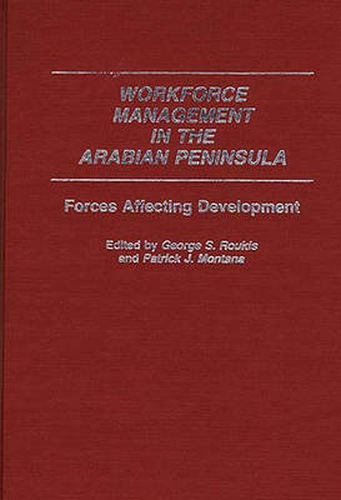Readings Newsletter
Become a Readings Member to make your shopping experience even easier.
Sign in or sign up for free!
You’re not far away from qualifying for FREE standard shipping within Australia
You’ve qualified for FREE standard shipping within Australia
The cart is loading…






This timely volume contains a series of informative and thought-provoking articles by experts in their fields. Together they provide a detailed assessment of the political, economic, and religious forces affecting the major oil rich states of the Arabian Peninsula, along with a comprehensive analysis of the primary forces affecting economic and resource development in that region. Topics discussed include historical areas of underlying conflict, regional analyses of pivotal forces and trends, Islamic influences upon the concept of labor, the subtleties of cultural differences and the transfer of technology, and employment contracts. Specific chapters provide resource profiles of the major Arab states in the Persian Gulf, along with statistical projections of future resource needs. In the concluding chapter, the editors offer a comparative analysis of the human resource requirements of the smaller Gulf states, along with practical applications for human resources management. The volume also contains a select biblography, charts on Kuwait and the United Arab Emirates, and a chart on comparative Western and Islamic organizations.
$9.00 standard shipping within Australia
FREE standard shipping within Australia for orders over $100.00
Express & International shipping calculated at checkout
This timely volume contains a series of informative and thought-provoking articles by experts in their fields. Together they provide a detailed assessment of the political, economic, and religious forces affecting the major oil rich states of the Arabian Peninsula, along with a comprehensive analysis of the primary forces affecting economic and resource development in that region. Topics discussed include historical areas of underlying conflict, regional analyses of pivotal forces and trends, Islamic influences upon the concept of labor, the subtleties of cultural differences and the transfer of technology, and employment contracts. Specific chapters provide resource profiles of the major Arab states in the Persian Gulf, along with statistical projections of future resource needs. In the concluding chapter, the editors offer a comparative analysis of the human resource requirements of the smaller Gulf states, along with practical applications for human resources management. The volume also contains a select biblography, charts on Kuwait and the United Arab Emirates, and a chart on comparative Western and Islamic organizations.